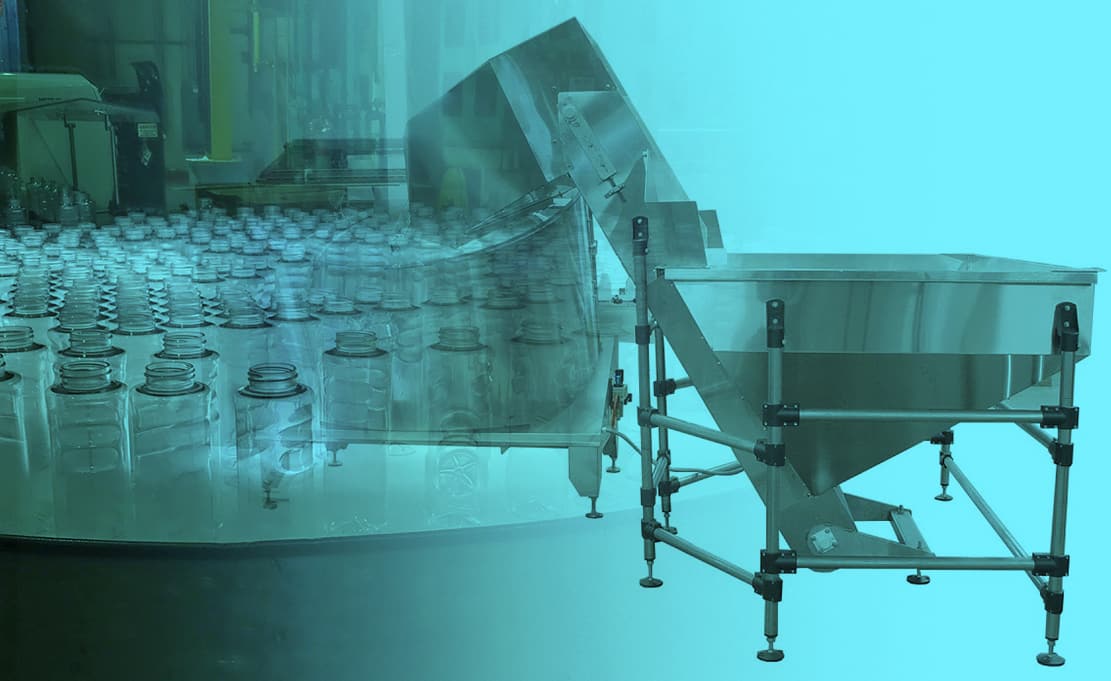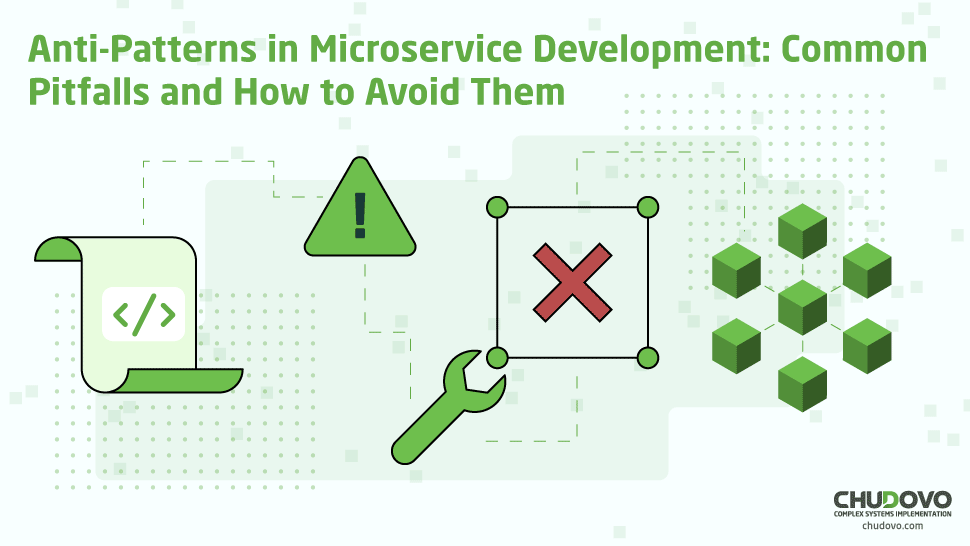Migrating Legacy React Monoliths to Scalable Microfrontends
React has become a common pick for building modern interfaces over the last few years. What drives this popularity is no mystery: developers like the freedom it provides, the community keeps growing, and updates arrive steadily. These factors turned this framework into a preferred tool for startups and big companies around the world. However, many of these apps have grown considerably in terms of functionality, features, and lines of code. Slowly, they turned into large React monoliths: big centralized codebases in which every change – big or small – affects the entire system.
Despite being one of the most traditional architectural patterns, the monolith presents problems when the applications start increasing its size over time: slower compilations, riskier deployments, teams overlapping code, and greater difficulty when trying to add new technologies to the project without affecting compatibility with the existing logic. These challenges often drive the need for a legacy React app migration toward more scalable solutions.
Here is where the microfrontend architecture shows up in the development world. Inspired by the backend philosophy of microservices, this approach consists of dividing a big application into independent pieces, each one of them being responsible for one small part of the project. Using a business as an example, we can think of features like checkout, catalogs, authentication, and product cart. Each module can be extracted and owned by a dedicated team to be developed and maintained separately. These pieces, although deployed on their own, are integrated into the final user experience as a single React microfrontend application.
Migrating a React monolith into a microfrontend architecture is not a straightforward process. It requires adoption of new tools, a consistent strategy that does not break the existing business logic, and, above all, a mindset shift across the entire organization. Nevertheless, the benefits that this approach brings to development teams (greater scalability, more autonomy, faster deployments, and more resilient applications) make this solution the way to go for many companies today.
For a complete understanding of this topic, we need to explore what they are, the most common migration strategies, the technologies that make migrating a React monolith to microfrontends a solid possibility, and how this approach can be applied to move from a hard-to-maintain legacy monolith to a modern and scalable system.
What are Microfrontends
Microfrontends can be defined as an autonomous fragment of a larger front-end application. Instead of having a centralized and unique codebase – a monolith – this type of software architecture divides the interface into multiple smaller pieces, which have unique, well-defined responsibilities.
This idea was inspired by the microservices concept used in the backend. Just as each microservice manages one small part of the business logic, the microfrontend applies the same principle in a similar way on the interface, with features like authentication or checkout processes, along with shared functionalities such as analytics, logging, and component libraries. These pieces are treated like “mini apps” that are later integrated into the main shell application.

It is important to make a clear distinction from microservices: while these handle business logic and server-side data processes, microfrontends are focused on the presentation layer. Still, the goal behind these approaches is the same: helping teams work more independently and scale, while letting the system grow without relying on one central logic. It highlights the value that a microfrontend React strategy adds to the development of large-scale applications.
Within the main benefits of the microfrontends, we can highlight the following:
- Scalability: the application grows in a modular way, adding new features and pieces of code without affecting the existing logic.
- Team autonomy: each development group is responsible for its own specific microfrontend.
- Independent deploys: faster and lower-risk updates.
Challenges of a React Monolith
The exponential growth of a React application can turn a project that was lightweight at first into something difficult to maintain. When the frontend is contained in one repository, issues might arise at different levels of it, and this situation has a direct impact on the team’s productivity.
One of the first symptoms is the increasing complexity of the code. With several React components scattered in a single codebase, adding new functionalities or refactoring parts of the application without generating conflicts becomes a difficult mission to accomplish.
Deployment emerges as another critical point here: in a monolith, even a minor error in any feature can compromise the entire process, and potentially even put the application at risk in production. This lack of independence between modules generates bottlenecks all over the codebase, and it leads to delays in delivery times.
Integrating new development teams into a React monolith can also be a challenging endeavor. The learning curve is high, coordination between groups tends to gain complexity, and the fact that the entire code resides in a single repository often results in frequent conflicts.
We can take e-commerce as a clear example. It might have thousands of components centralized in one repository. Any adjustment – no matter big or small – in the shopping cart forces a rebuild and redeployment of the entire application, which slows down the system’s evolution. These are the issues that drive companies to seek alternatives and migrate React monolith applications toward modern architectures, with legacy application migration becoming a highly adopted strategy to achieve scalability and flexibility.
Migration Strategy
The safest way to migrate a React monolith is by applying the Strangler Pattern: it consists of gradually surrounding it with new pieces until it is fully replaced. In practice, this implies a piece-by-piece migration, starting from an independent feature (such as the checkout, continuing with the ecommerce example), and maintaining coexistence between the monolith and the new microfrontends for a controlled period of time.
Choosing the first piece of code is critical for the transition. Ideally, the team should pick a module that doesn’t depend too much on others but still impacts the delivery cycle—for instance, checkout, catalog, or authentication in custom ecommerce solutions. The point is to make sure this feature can be built, versioned, and shipped on its own, without slowing down the rest of the system.
During the migration, the shell acts as a compositor: it decides which routes will continue rendering monolith’s interfaces and which ones will mount remote microfrontends. This approach makes it possible to validate the new piece in production, perform selective rollbacks, and reduce the risk of the application breaking at a critical time.
Here are some practical factors that can make your plan succeed:
- Use a CDN to serve the assets for each microfrontend.
- Handle routing at the shell level, so each URL knows exactly where to go
- Set up CI/CD per service, with independent pipelines, feature flags, and gradual rollouts.
// ShellApp.jsx
import React, { Suspense } from "react";
const Checkout = React.lazy(() => import("checkoutApp/CheckoutPage"));
export function AppRouter() {
return (
<Suspense fallback={<div>Loading checkout…</div>}>
<Route path="/checkout" element={<Checkout />} />
</Suspense>
);
}Shell mounting a remote microfrontend (Checkout) with React.lazy + Suspense during the coexistence phase.
Following this pattern, the transition can start with a single feature while observing its behavior (checking for errors and measuring conversion times). This cycle should be repeated with each piece until the monolith is reduced to a minimal shell or entirely disappears.
This technique reduces risks, accelerates the application’s time-to-market, and makes it possible to learn while the product is in production without interrupting the business. For many companies, the best way forward is clear: migrate React monolith to microfrontends and unlock scalability.
Case Study: Migrating a React Monolith to Microfrontends
For a better understanding of the migration, it’s time to apply the theory from this article to a real-case scenario, using the e-commerce example we have been following.
We can imagine that this e-commerce site started as a React monolith. With time, it grew, and thousands of components were added to the repository. As stated before, every change now forces us to rebuild and redeploy the entire project.
The first step is to analyze the monolith. We should identify which of the pieces can live on their own. The idea behind this is to pick a module that has low dependencies on others and a big impact on the business logic, so it can serve as a production example of how microfrontends can be implemented gradually.
Once the analysis is done and the team develops the feature as a “mini app”, then it can be consumed from the shell. In the following piece of code, the <CartWidget /> component is being added to the main application.
import CartWidget from "cartApp/CartWidget";
function Navbar() {
return (
<nav>
<h1>My Store</h1>
<CartWidget />
</nav>
);
}This Cart feature is exposed from a remote microfrontend and integrated into the navigation bar. The rest of the app remains as a part of the monolith, but this functionality is now being deployed on its own.
After some time, each microfrontend should be deployed by itself, using an individual pipeline. In practice, this means that the feature now treated as a microfrontend can be changed and improved without touching the rest of the application, which is the main goal of this type of software architecture. As a result, the risk of breaking the entire application at once decreases significantly.
By repeating this cycle – analyze, extract, integrate, and deploy -, the monolith becomes smaller every time until it is reduced to a shell. This is what an organized and scalable microfrontend transition looks like.
Advantages and Limitations
Adopting this type of architecture not only solves the typical problems of a monolith but also opens the door to new ways of working. Having said that, like any structural change, it comes with upsides and downsides that development teams should be aware of.
On the advantages, the scalability takes the bigger highlight. Each module works independently, and that makes it easier to support new features and future growth. A well-planned microfrontends migration requires clear boundaries, independent pipelines, and careful coordination.
The team autonomy also emerges as an important point: by dividing the tasks, each development group can focus on its own React microfrontend, with a dedicated repository and with its own release cycle. It is worth noting that the quality of the product increases when a whole team is responsible for one specific part of the main application.
Deployment speed and safety are another upside. Smaller pieces of code mean lower risk and more controlled releases. The rollbacks – if needed – are limited now to a single microfrontend instead of affecting the entire project.
The complexity of this approach comes right at the beginning. It can be overwhelming to design the infrastructure and decide which modules are the ones that should be migrated first.
Shared libraries and lgic must be managed carefully to avoid code fragmentation. Maintaining consistency across the system is another concern in this matter.
Last but not least, team communication. Perhaps one of the biggest challenges is to successfully complete the migration. Groups should understand that independence does not mean isolation. It is key for developers to stay aligned and well-informed about every aspect of the product.
Migrating a legacy React monolith into a set of microfrontends is not an easy task, but the benefits the project gains make the effort worthwhile. Large monoliths – sooner or later – reach a point where compilation slows down. And it makes sense: having the entire application as one big codebase eventually affects every aspect of the project. Deployments become riskier, and teams struggle to coordinate their work. The adoption of the microfrontend strategy directly addresses these issues by dividing the system, as we explained before.
This is by no means a one-day restructuring. Although effective, the meaningful changes will take a while to make an impact on the actual project. Teams should handle this one module at a time, testing results, and ensuring a smooth integration at each step.
Microfrontends require careful planning. Infrastructure design and pipeline readiness are decisive factors, especially at the beginning. Once the foundation is set and the transition is on its way, advantages outweigh challenges.
To achieve a successful result, teams should not aim for a big and complex implementation, all at once. Big, structural changes never happen overnight, and the choices made along the way can shape the outcome for years. Companies that want more flexibility and resilience have found that moving from a React monolith to microfrontends with a React js consultancy is a practical path to building an architecture they can actually rely on.


